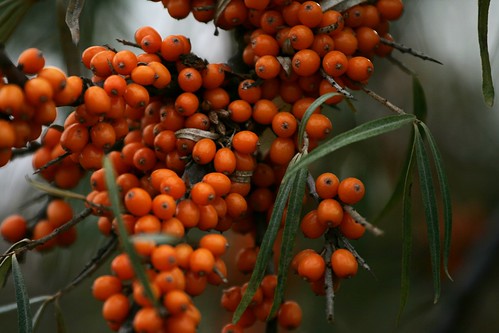 |
| Flax flower photo courtesy of Elize Manoukian |
Flax is an annual plant grown mostly in the colder regions of the world. Flax oil breaks down at room temperature, which is why it is stored in the refrigerator section in supermarkets. Use it fresh out of the bottle onto your food!
Cooking defeats the purpose of flax oil by breaking down the heat-sensitive essential fatty acids (and makes the flax oil taste like paint!). Mixed with balsamic or plum vinegar, it can be a delightful salad dressing. Flaxseeds can be ground up and sprinkled on a salad or cereal which is another good way of introducing yourself to flax oil. If you are pure vegetarian, then flax oil is even more important. Flax-seeds are not only rich in omega-3 fatty acids but also are a great source of protein and fiber. It is a perfect addition to salads and is great in cereals.
Another oil to consider is hemp seed oil, which contains large amounts of omega-6 and omega-3 fatty acids in a ratio (3:1) that is useful to our bodies. It can be considered as perfect oil and is available in healthy supermarkets. Canola and vegetable oils also contain some omega-3 fatty acids, but in less favorable proportions of essential and other unsaturated fatty acids.
The key is ratio. Preferable 3:1. Three parts omega-6 to one part omega-3. Flax and hemp are ideal for this.
Sources for omega -3s differ, but here are some general examples:
3 ounces of herring = 1.2 grams of omega-3 fatty acids
3 ounces of salmon = 1.3 grams of omega-3 fatty acids
3 ounces of halibut = 1.0 grams of omega-3 fatty acids
3 ounces of mackerel = 1.6 grams of omega-3 fatty acids
1 1/2 teaspoons of flaxseeds = 3 grams of omega-3 fatty acids
Medically speaking, 15 grams (1 tablespoon) of flaxseed oil provides 8 grams of ALA, which is converted in the body to EPA and then DHA at an efficiency of (2%-15%), and (2%-5%) respectively.
Eggs produced by chickens fed a diet of greens and insects produce higher levels of omega-3 fatty acids (mostly ALA) than chickens fed corn or soybeans! Check your labels. Free-range doesn't mean that these chicks are freely roaming and are happy. It just mean, for most egg producers, that they are not in cages and are still crowded in their environment.
Walnuts are one of few nuts that contain appreciable omega-3 fat, with approximately 1:4 ratio of omega-3 to omega-6. Acai palm fruit contains omega-3 fatty acids, and so does the sea buckthorn.
A recent new study demonstrated that people who consume omega-3 fatty acid while following a weight loss program feel fuller longer.
 |
| Sea Buckthorn from Lake Sevan photo courtesy of Arthur Chapman via Flickr |
- Dr. Mariam Manoukian and Kim Fielding
photo courtesy of Arthur Chapman via Flickr

No comments:
Post a Comment